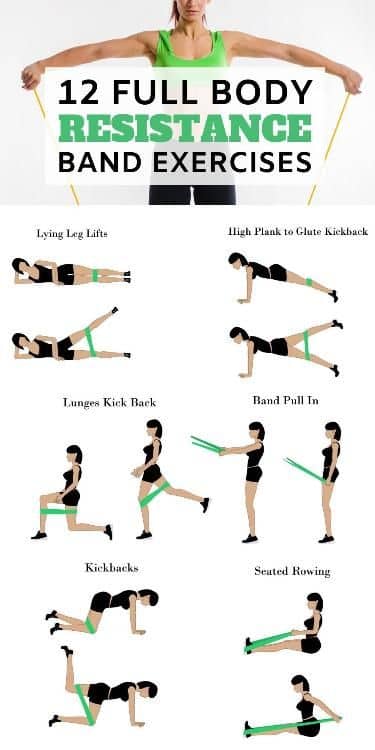The Benefits of Resistance Bands for a Full-Body Workout
Why Use Resistance Bands for Full-Body Training?
Resistance bands have gained immense popularity in recent years due to their versatility, affordability, and effectiveness in strengthening the entire body. Unlike traditional weights, resistance bands provide constant tension throughout exercises, leading to improved muscle activation and growth. Whether you are a beginner or a seasoned fitness enthusiast, incorporating resistance bands into your workout routine can bring numerous benefits.
Who Can Use Resistance Bands?
One of the best things about resistance bands is that they are suitable for everyone. From beginners to professional athletes, anyone can use resistance bands to enhance their fitness level. These bands are particularly beneficial for:
- Beginners who want to build strength safely and gradually.
- Seniors who need low-impact exercises to maintain mobility and flexibility.
- Athletes looking for ways to improve strength, endurance, and agility.
- Individuals recovering from injuries who require controlled resistance for rehabilitation exercises.
- People with limited space who need portable and compact workout equipment.
When Should You Use Resistance Bands?
Resistance bands can be used at any time of the day, depending on your schedule and fitness goals. They are ideal for:
- Morning workouts to energize your body and kickstart your metabolism.
- Post-workout recovery by using light resistance for stretching and muscle relaxation.
- At-home workouts when you don’t have access to a gym or heavy weights.
- Warm-ups and cooldowns to improve mobility and prevent injuries.
- On-the-go training since resistance bands are lightweight and portable, making them perfect for travel workouts.
Best Types of Resistance Bands for Full-Body Workouts
There are different types of resistance bands, each serving a unique purpose:
- Loop Bands (Mini Bands): Best for lower body exercises like squats, lunges, and glute activation.
- Tube Bands with Handles: Great for upper body exercises, including bicep curls, shoulder presses, and back workouts.
- Figure-8 Bands: Ideal for strength training and rehabilitation exercises.
- Therapy Bands: Best for physical therapy and gentle stretching.
- Heavy-Duty Resistance Bands: Perfect for advanced users who want to increase muscle strength and resistance training intensity.
The Importance of Full-Body Resistance Band Exercises
Full-body resistance band exercises offer multiple benefits, making them a valuable addition to any fitness routine. Some key advantages include:
1. Enhanced Muscle Strength and Toning
Resistance bands provide constant tension, which challenges muscles throughout the movement. This results in increased muscle strength, endurance, and toning without needing heavy weights.
2. Improved Flexibility and Mobility
Using resistance bands for stretching and mobility exercises enhances flexibility, reduces stiffness, and prevents injuries. They are excellent for improving joint health and range of motion.
3. Low-Impact and Joint-Friendly Training
Unlike heavy weights, resistance bands offer a lower-impact alternative that reduces stress on joints and ligaments. This makes them ideal for people with joint pain or those recovering from injuries.
4. Versatility for All Fitness Levels
From beginners to advanced athletes, resistance bands provide customizable resistance levels. You can increase or decrease tension by adjusting the band’s length or choosing a different resistance level.
5. Convenience and Portability
Resistance bands are lightweight, compact, and easy to carry, making them a great option for home workouts, travel, or outdoor training.
6. Cost-Effective Fitness Solution
Compared to gym memberships or expensive workout equipment, resistance bands are an affordable way to achieve a full-body workout without breaking the bank.
12 Full-Body Resistance Band Exercises
To maximize the benefits of resistance bands, incorporate these effective exercises into your routine:
Lower Body Exercises
- Lying Leg Lifts – Strengthen the core and lower body.
- Kickbacks – Target the glutes and hamstrings.
- Lunges Kickback – Engage the legs, glutes, and core.
Upper Body Exercises
- Band Pull-In – Build shoulder and arm strength.
- Seated Rowing – Enhance back and arm muscles.
- Bicep Curls – Tone and strengthen the biceps.
- Overhead Shoulder Press – Improve shoulder and arm endurance.
Core and Full-Body Exercises
- High Plank to Glute Kickback – Engage the core, glutes, and shoulders.
- Squats with Resistance Band – Strengthen the lower body and core.
- Deadlifts with Resistance Band – Activate the hamstrings, glutes, and back.
- Russian Twists – Improve core stability and strength.
- Standing Oblique Crunches – Target the oblique muscles for a sculpted waistline.
How to Use Resistance Bands Safely
To avoid injuries and get the most out of your workout, follow these safety tips:
- Always check the resistance band for tears or damage before use.
- Maintain proper posture and form throughout each exercise.
- Gradually increase resistance levels as you progress.
- Anchor the band securely to avoid snapping.
- Warm up before starting your workout and cool down afterward.
Conclusion
Resistance bands are an excellent tool for full-body workouts, offering numerous benefits, including muscle strengthening, flexibility improvement, and low-impact training. They are suitable for all fitness levels, from beginners to advanced athletes, and provide an affordable and convenient way to stay fit. By incorporating resistance bands into your routine, you can achieve a well-rounded workout anytime, anywhere.
Start your resistance band workout today and experience the transformative benefits for yourself!










